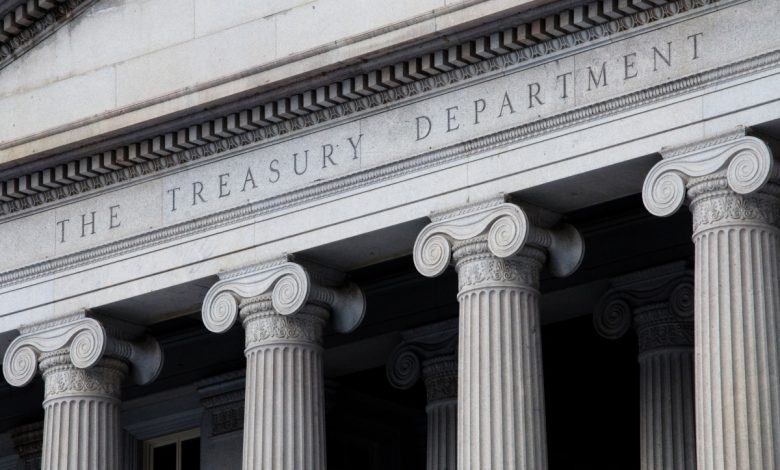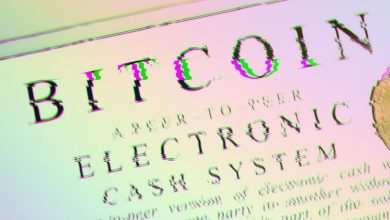A New Era in U.S. Crypto Regulation

The GENIUS Act: A New Era in U.S. Crypto Regulation originally appeared on L.A. Mag.

The U.S. Department of the Treasury’s Treasury BuildingCourtesy rrodrickbeiler via Adobe Stock
Meet the stablecoin: the dollar-pegged digital asset quietly powering payments and blockchain infrastructure across the digital economy.
What happens when Washington draws a legal line around it? That’s the question at the heart of the GENIUS Act, the first federal law to formally bring payment stablecoins under federal oversight.
The law marks a turning point, moving from improvisation to infrastructure. Whether you’re a fintech founder, investor, policymaker, or just wondering how AI agents might one day handle your transactions, this is a critical moment that requires your attention
The GENIUS Act doesn’t just regulate a form of crypto: it sketches the early architecture of how programmable money may function in the U.S. financial system.
Stablecoins are a class of digital assets designed to maintain a fixed value, typically by being backed one-to-one by U.S. dollars or similarly liquid assets. They are increasingly used for payments, asset transfers, and blockchain-based financial applications, often as a less volatile alternative to traditional cryptocurrencies. Despite their growing role in digital finance, stablecoins have thus far operated in a regulatory gray area in the United States.
The passage of the GENIUS Act (S.1582) marks a significant federal intervention. GENIUS establishes the first comprehensive legal framework for stablecoin issuance, oversight, and redemption. This article examines the Act’s core provisions, situating it alongside related legislation such as the CLARITY Act. We’ll also examine GENIUS’s broader implications for financial regulation, digital innovation, and California sectors.
What is the GENIUS Act?
The Guiding and Establishing National Innovation for U.S. Stablecoins Act (GENIUS) creates a legal framework governing the issuance and regulation of payment stablecoins. Under the law, only approved entities may issue stablecoins for use in the United States. These issuers must maintain full reserve backing in U.S. dollars, short-term Treasuries, or similarly liquid assets. Issuers are required to publish monthly reserve disclosures and redemption policies.
The law distinguishes between federal and state regulatory pathways, setting thresholds for when federal oversight becomes mandatory. GENIUS also prohibits misleading claims about government backing, bars interest payments on stablecoin holdings, and restricts who may act as custodians of reserve assets. By codifying these standards, the Act aims to stabilize the market, enhance transparency, and limit systemic risks tied to digital asset volatility and insolvency events.
GENIUS also introduces detailed supervisory and compliance obligations for permitted issuers. Entities must undergo periodic examinations, submit annual attestations from independent auditors, and implement robust anti-money laundering protocols consistent with the Bank Secrecy Act. Stablecoins issued under the Act must be redeemable at par, on demand, and in legal tender, with clear terms disclosed to users.
In the event of insolvency, the law grants stablecoin holders priority over general creditors for claims on reserve assets. This provision is aimed at insulating users from the counterparty risk historically associated with unregulated crypto platforms. Foreign issuers offering stablecoins to U.S. residents are also required to comply with the same regulatory standards and must designate a U.S.-based supervisory contact, effectively extending the law’s reach across jurisdictional lines.
Legislative Timeline
President Trump’s Executive Order titled “Strengthening American Leadership in Digital Financial Technology” establishes U.S. leadership in digital financial technology as a policy priority. The order also revoked two prior directives:
-
Former President Biden’s Executive Order 14067 on “Ensuring Responsible Development of Digital Assets,” which had prioritized risk-based assessments and interagency coordination
-
The Department of Treasury’s 2022 framework on digital asset enforcement.
In place of those frameworks, the new order emphasized competitive positioning, regulatory clarity, and the acceleration of innovation, signaling a broader shift from caution to strategic engagement in digital finance.
The GENIUS Act advanced rapidly through the 119th Congress.
-
May 1 – Bill introduced in the Senate
-
June 17 – Passed in the Senate (68–30 vote)
-
July 17 – Passed in the House (308–122 vote)
-
July 18 – Signed into law by the President
-
Effective Date – 18 months post-enactment or 120 days after regulations are finalized, whichever is first
The bill was introduced in the Senate on May 1 and passed with bipartisan support on June 17 by a vote of 68–30. In the House, it cleared on July 17 by a margin of 308–122, with backing from 102 Democrats and 206 Republicans. President Trump signed the bill into law the following day, making it the first federal legislation to formally regulate a segment of the cryptocurrency market. The law is scheduled to take effect within 18 months of passage or 120 days after the implementing regulations are finalized, whichever comes sooner.
The Regulatory Framework
The GENIUS Act introduces a tiered regulatory model that differentiates between federally regulated issuers, state-regulated issuers, and qualified foreign entities. Issuers may choose to be overseen by a federal agency—such as the Office of the Comptroller of the Currency (OCC), the Federal Reserve, or the Federal Deposit Insurance Corporation—or by a state regulator, provided the state’s oversight framework is certified as substantially similar to federal standards. However, once an issuer surpasses $10 billion in outstanding stablecoin issuance, federal oversight becomes mandatory.
All permitted issuers must maintain high-quality reserve assets, comply with anti-money laundering rules under the Bank Secrecy Act, and adhere to restrictions on advertising, yield offerings, and re-pledging of reserves. To enhance consumer protection, GENIUS grants stablecoin holders priority claims in bankruptcy proceedings. GENIUS also limits issuer activity to core functions including issuance, redemption, reserve management, and directly related operations.
Interoperability with the CLARITY Act
While the GENIUS Act addresses the issuance and oversight of payment stablecoins, it was passed alongside a separate legislative effort to define and regulate the broader digital asset market.
The Digital Asset Market Clarity Act (H.R.3633), or the CLARITY Act, proposes a regulatory framework for digital commodities such as blockchain-native tokens and trading platforms. It assigns primary authority to the Commodity Futures Trading Commission (CFTC) while preserving the Securities and Exchange Commission’s (SEC) jurisdiction over certain primary market activities. Importantly, the CLARITY Act excludes stablecoins from its scope, reflecting the division of regulatory labor emerging at the federal level.
As of July 2025, the CLARITY Act remains pending in Congress. The bill passed out of the House Financial Services Committee this past May, but has not yet been brought to the House floor. While it enjoys support from several bipartisan co-sponsors, its prospects remain uncertain amid broader debates over the roles of the SEC and CFTC in regulating digital assets.
Together, the two bills would offer the outlines of a dual-track approach: GENIUS governs who may issue stablecoins and under what conditions, while the CLARITY Act would address how digital assets (excluding stablecoins) may be traded, listed, and supervised. If passed, the CLARITY Act would complement GENIUS by clarifying market structure, reducing jurisdictional ambiguity, and aligning regulatory oversight with asset type.
Implications for California Sectors
Technology and Finance: California’s position as a hub for financial technology and venture capital makes it particularly responsive to regulatory shifts like the GENIUS Act.
For California fintech companies, the law offers a more defined legal pathway for issuing or integrating stablecoins into consumer-facing products, potentially expediting institutional adoption. Nonbank entities may benefit from the ability to choose between state and federal oversight, depending on their scale and business model. Venture capital activity could experience momentum as regulatory exposure becomes more predictable and compliance risks become clearer, especially for early-stage stablecoin platforms.
The GENIUS Act’s dual-track regulatory model also creates a strategic opening for California to influence how stablecoin markets evolve. If issuers opt for state-level oversight, California’s financial regulators—through licensing requirements, compliance standards, or consumer protection rules—could effectively shape the operational landscape for stablecoin activity within the state.
The GENIUS Act’s formalization of stablecoin issuance and reserve requirements may also shape how AI and blockchain-based distributed networks integrate digital currency functionality. By establishing reliable, legally anchored digital dollars, the law reduces uncertainty and encourages deeper integration of stablecoins with:
-
Smart contracts — self-executing programs stored on a blockchain that automatically carry out the terms of an agreement when certain predetermined conditions are met. These are a core component of decentralized finance, which refers to a system of financial services built on blockchain networks.
-
Payment APIs — connecting apps to payment processors, automating transactions between users and services. These are critical infrastructure for fintech platforms, online marketplaces, and automated supply chains.
-
Machine-to-machine transactions — automated exchanges of data, services, or value between devices without human intervention. These enable autonomous AI agents to interact economically without human input.
Education: In higher education, research institutions may find new incentives and clearer mandates to engage with digital asset infrastructure, legal frameworks, and financial systems design. As stablecoins move from experimental tools into more regulated and interoperable roles, universities are well-positioned to contribute to foundational research, compliance modeling, and public-sector collaboration: particularly those with strong programs in law, computer science, public policy, or economics. Institutions like the University of California, Stanford, and Caltech could expand their involvement in areas ranging from blockchain protocol development to digital monetary theory and regulatory impact analysis.
Broader Legal and Economic Implications
By codifying federal standards for stablecoin issuance and reserve management, the GENIUS Act introduces greater legal certainty to a historically ambiguous segment of digital finance. That clarity may facilitate wider adoption by institutional actors, including payment processors, banks, and fintech platforms, while also increasing consumer trust. The requirement for full reserve backing primarily in U.S. dollars and Treasuries could reinforce dollar dominance in global digital transactions and drive incremental demand for government debt.
At the same time, analysts from the Bank for International Settlements have raised concerns about legitimizing private stablecoins. They caution that stablecoin reserve mandates could distort demand in short-term Treasury markets and amplify liquidity risks. The Government Accountability Office has also flagged regulatory fragmentation between state and federal regimes as a potential avenue for arbitrage and uneven enforcement.
A coalition of banking associations submitted a joint letter opposing key provisions of the GENIUS Act. This coalition includes the American Bankers Association, America’s Credit Unions, Consumer Bankers Association, the Independent Community Bankers of America, and the National Bankers Association. The letter raises serious concerns that the legislation would establish a “parallel payments charter”, allowing nonbank entities to issue dollar-backed liabilities (such as stablecoins) without being subject to traditional bank capital, liquidity, or resolution requirements. According to the signatories, this approach risks eroding prudential safeguards and undermining the stability and integrity of the regulated banking sector.
These critiques reflect a deeper concern about the GENIUS Act’s proposed dual-licensing model, which enables both state and federal pathways for stablecoin issuance. Simply put, the coalition questions whether a regulatory framework divided across jurisdictions, and possibly uneven in enforcement, can effectively address emerging risks in the payments space. At the heart of the issue is whether this fragmented oversight structure can deliver systemic resilience and competitive neutrality in a rapidly evolving financial ecosystem characterized by programmable finance, decentralized systems, and real-world asset tokenization.
Given California’s concentration of fintech startups, blockchain infrastructure firms, and engineering talent, any divergence in how the state interprets or layers additional requirements onto the federal baseline could have an outsized impact. Over time, this may position California not only as a compliance destination but also as a jurisdiction that indirectly sets technical and legal norms for stablecoin deployment nationwide. If California leads by setting high-integrity standards for stablecoin deployment, it may turn the current regulatory concerns into strengths, positioning the state not only as a compliance hub but also as a national precedent-setter. These criticisms could instead create competitive advantages, fostering urgency to establish a robust framework for the nation to follow suit.
The ultimate effectiveness of the GENIUS Act will depend heavily on how well regulators can operationalize oversight, coordinate across state and federal boundaries, and adapt quickly to innovation in market infrastructure and use cases.
Next Steps
The GENIUS Act represents a foundational shift in U.S. digital asset policy, providing the first comprehensive statutory framework for the issuance and oversight of payment stablecoins.
By defining who can issue these assets, under what terms, and with what obligations to consumers and regulators, the law brings legal structure to a domain that has operated largely on custom and risk tolerance.
Still, its long-term impact will depend on how federal agencies interpret and implement the law, how consistently state regulators align with federal standards, and whether Congress completes the legislative framework by advancing complementary bills like the CLARITY Act.
In the near term, stablecoin issuers will need to assess which supervisory path to pursue, while financial institutions and technology firms recalibrate compliance, infrastructure, and strategy. As the digital financial infrastructure matures, stablecoin regulation may serve as both a test case and a template for broader reform in digital finance.
This story was originally reported by L.A. Mag on Jul 30, 2025, where it first appeared.




